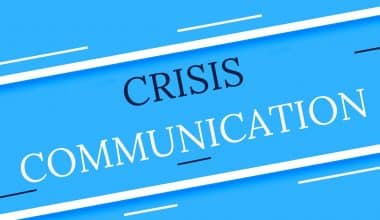In the intricate tapestry of a thriving business, each thread—or employee—plays a pivotal role in maintaining a robust and dynamic work environment. When one of these threads frays due to issues like alcoholism, it doesn’t merely affect the individual but sends ripples throughout the entire organization. Addressing employee alcoholism is not merely a matter of safeguarding productivity but is pivotal in nurturing a healthy, supportive, and prosperous work environment. The repercussions of neglecting such a crucial aspect can permeate through the layers of a company, tarnishing its culture and potentially its public image. Thus, developing a structured framework to identify and manage employee alcoholism becomes imperative, not just from a business standpoint, but from a humane perspective as well, ensuring that the workplace remains a secure and supportive space for all its members.
Identifying Employee Alcoholism
Navigating through the delicate matter of identifying alcoholism within the workplace demands a meticulous and empathetic approach. Recognizing the signs and symptoms of alcoholism, which may manifest as frequent tardiness, a decline in performance, or altered behavior, is the initial step in curating a supportive response. It’s imperative to note that the objective is not to penalize or stigmatize the individual but to provide a pathway towards recovery and well-being. Management and HR teams play a crucial role in this aspect, necessitating training to discern the subtle signs of struggle an employee might be experiencing. This involves not only understanding the physical and behavioral indicators of alcohol misuse but also creating an environment where employees feel safe to disclose their struggles without fear of retribution. The equilibrium between maintaining professional boundaries while offering support is delicate, yet paramount, ensuring that the intervention is both ethical and effective.
Addressing and Managing Employee Alcoholism: Rehabilitation and Support
When the subtle yet insidious tendrils of alcoholism weave through an employee’s life, the journey towards rehabilitation and recovery necessitates a compassionate and structured approach. The second step in our framework involves not just identifying the issue, but actively participating in the solution: providing rehabilitation and support. Employers must forge a path that leads towards recovery, ensuring that the employee doesn’t traverse it alone. This involves crafting policies that not only facilitate access to professional rehabilitation programs but also ensure that the workplace serves as a stable, understanding environment during this journey. Rehabilitation isn’t merely a destination but a journey, often long and arduous, requiring continuous support from both professionals and peers alike. The role of the business here is to act as a steadfast ally, providing the necessary resources, time, and emotional support that can aid in the employee’s recovery, while simultaneously ensuring that the work environment remains unaffected. This delicate balance is achieved through clear policies, open communication, and a genuine commitment to the well-being of the employee.
A Closer Look at Rehabilitation in a Business Context
Rehabilitation, especially within a business context, is a multifaceted journey that extends beyond the conventional understanding of merely addressing the physical aspects of alcoholism. It encapsulates a holistic approach, intertwining physical recovery with psychological support, ensuring that the employee is enveloped in a cocoon of comprehensive care. In a business setting, facilitating rehabilitation might involve providing access to professional treatment programs, which could encompass detoxification, therapy, and support groups, ensuring that the employee is equipped with a robust arsenal to combat alcoholism. Moreover, it’s pivotal to intertwine this with a supportive work environment that respects the employee’s journey, perhaps through flexible work hours, providing time off for treatment, or even offering a phased return to work plan. The essence of rehabilitation within a business context is not merely to eradicate the physical dependency on alcohol but to ensure that the employee, upon their return, reintegrates into a workspace that is cognizant and respectful of their journey, thereby fostering a sustainable path towards recovery and maintaining a healthy, productive work environment.
Continuous Monitoring and Follow-up: Sustaining the Path to Recovery
Embarking on the path to recovery is a commendable first step, but ensuring that an employee remains steadfast on this journey necessitates continuous monitoring and follow-up. The post-rehabilitation phase is equally, if not more, critical in ensuring the sustained well-being of the employee and necessitates a structured follow-up program. This involves regular check-ins, providing ongoing support, and perhaps, facilitating continued access to therapy and support groups. It’s crucial to recognize that recovery is not a linear path and may involve setbacks. A well-structured monitoring program, therefore, should not only celebrate successes but also be equipped to provide additional support during challenging times. This might involve revisiting or modifying the rehabilitation plan, providing additional resources, or even exploring alternative therapies. The objective is to create a dynamic, responsive support system that evolves according to the needs of the employee, ensuring that the path to recovery, with all its ebbs and flows, is navigated with unwavering support and understanding from the employer.
Addressing employee alcoholism while maintaining a respectful, lawful, and ethical stance can often present a complex challenge for businesses. The intertwining of legal and ethical considerations necessitates a meticulously crafted policy that safeguards the rights and dignity of the employee while ensuring the overall wellbeing of the workplace. Employers must navigate through the delicate waters of maintaining confidentiality, adhering to legal obligations, and providing genuine support. This involves ensuring that any interventions or support provided do not infringe upon the employee’s rights and are in compliance with employment laws. Furthermore, ethical considerations, such as respecting the employee’s privacy, ensuring that the intervention is non-discriminatory, and maintaining a supportive, stigma-free environment, are paramount. Crafting a policy that intertwines legal compliance with ethical responsibility ensures that the pathway to addressing employee alcoholism is not only effective but also fosters a culture of respect, empathy, and understanding within the organization, thereby nurturing a healthy, supportive work environment for all.
Case Studies: Learning from Real-world Scenarios
Exploring real-world instances where businesses have successfully navigated the complexities of managing employee alcoholism can provide invaluable insights and pave the way for implementing effective strategies. Case studies serve as a mirror, reflecting both the challenges and triumphs experienced by organizations, thereby offering a roadmap that can be tailored to fit distinct corporate cultures and environments. For instance, a business that implemented a robust employee assistance program, providing access to professional counseling and support, might showcase the tangible impact of such initiatives on employee well-being and overall productivity. Conversely, exploring a scenario where an employee’s struggle with alcoholism was not addressed effectively could highlight the potential repercussions, both on an individual and organizational level. These real-world narratives not only provide a practical perspective on the theoretical framework but also offer a humanized view of the impact of such initiatives, thereby enabling businesses to craft strategies that are not only effective but also empathetic and humane.






